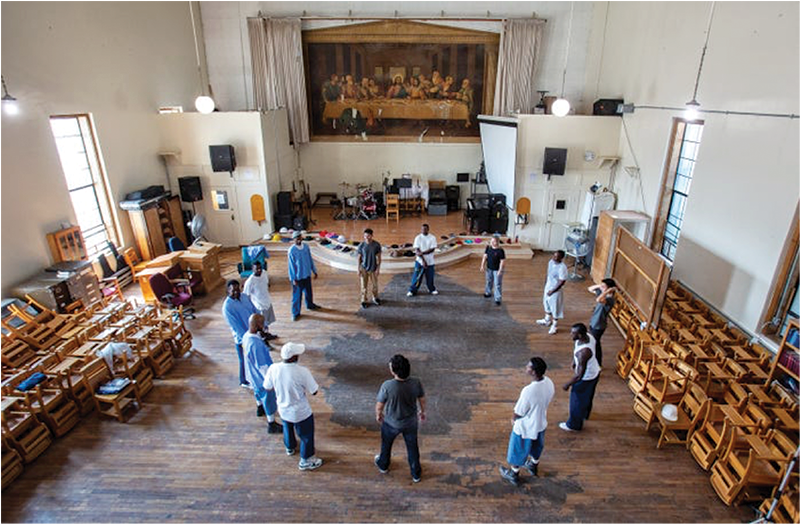A local photographer is working to change public perceptions of incarcerated people. In the process, he’s hoping to inspire compassion and empathy.
For 20 plus years, Peter Merts has taken photographs of artists and their creative artworks in California’s prison system. Through his work, he wants to change public opinion by providing a holistic view of the incarcerated, reported the Insider magazine.
“It seemed to me that there was a lack of empathy or compassion, and I began to think about this and I realized that the general public has a pretty negative view of people who are incarcerated,” Merts said.
His inspiration for his photo series began in 2006 at a San Quentin after a California Arts in Corrections instructor requested Merts take pictures of the art class. Merts instantly felt the energy of the incarcerated artists.

Merts’s expressive camerawork allowed his relationship with the art rehabilitation organization to expand beyond The Q and spread throughout the state. Instructors from other institutions began inviting him to shoot their art classes.
Merts works primarily with the California Arts in Corrections — the only statewide correctional arts program offered in the U.S. The organization focuses primarily on the emotional and social well-being of incarcerated people through art.

Several states have rolled out pilot programs similar to California’s model. A 2014 study by the Center on Juvenile and Criminal Justice found such programs could lead to more self-confidence, intellectual flexibility, and better time management.
The photographs Merts takes inside California prisons are not always received with an open mind. At times, there is hostility by some people in the public when he shares his work. Some people complain about art resources being provided to incarcerated people when children lack art classes in public schools.
To help alter these perceptions, Merts changed his approach to taking photos. He began focusing on the hands of the incarcerated people producing the artwork. His initial fly-on-the-wall approach left Merts feeling disengaged from the pride the artists exhibited in their work. He found the best way to capture that accurately was to become an active member of the environment — to connect and interact while they created the art.
Rather than focusing on the finished artwork, Merts found that photographing the process of creating the piece was more real. The spontaneity came during the rehearsals and the crafting of the art, not so much in the final product.

“That is part of why I try to work in close and get faces and expressions and interactions between people, cause I think it shows people’s nature, their personality, their authenticity, and I think that’s the best way to engender empathy for the folks inside,” Merts told Insider.
In his work, Merts also highlights the work the artists are in the process of making. He noticed many of the artists turn to their heritage, religion, and culture when looking for ideas on what to make. Others depict the landscape, the environment, or elements of nature.
The relationships Merts has established doing this work goes beyond the prison or their arts program. Due to prison regulations, Merts is unable to share his photos with the incarcerated artists directly. Instead, he sends families the photos so they can send them to their incarcerated loved ones.
In his time in California prisons, Merts has encountered incarcerated artists who have held onto his photos of them.

In one such instance, Merts saw an incarcerated artist for a second time at another facility years after Merts had first photographed him.
“He had transferred, but he heard that a photographer was coming this day. He thought it might have been the same photographer … so he brought this photograph that his family had sent him, which was really touching to see that,” Merts said.
Merts has a book of his photographs called, “Ex Crucible: The Passion of Incarcerated Artists.” He hopes his audience will look at the incarcerated artists with feelings of empathy and compassion.
“I would love for people’s preconceptions of incarcerated people to soften, to become more realistic,” Merts said.